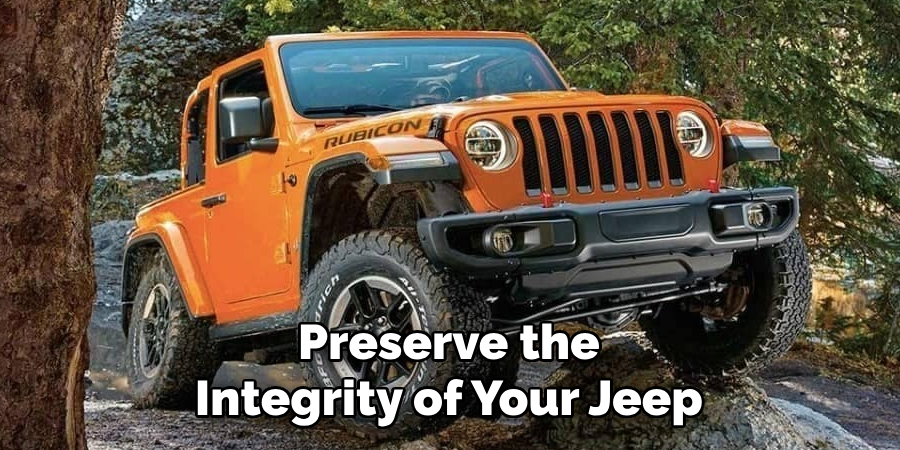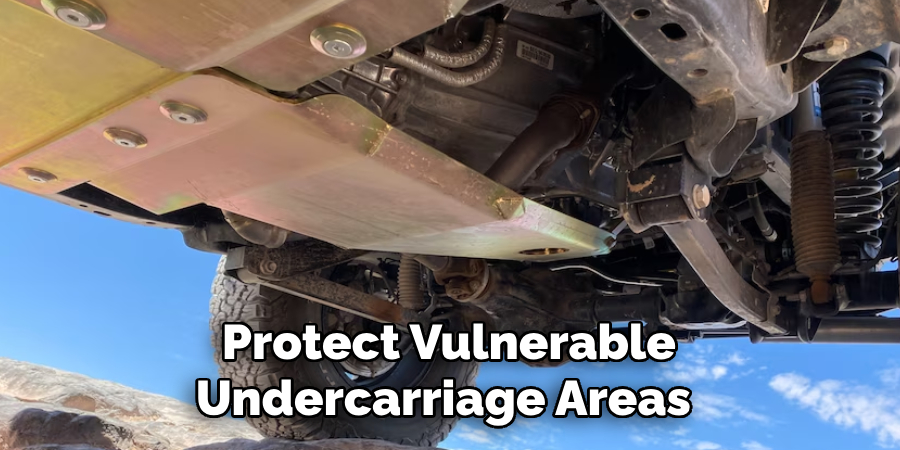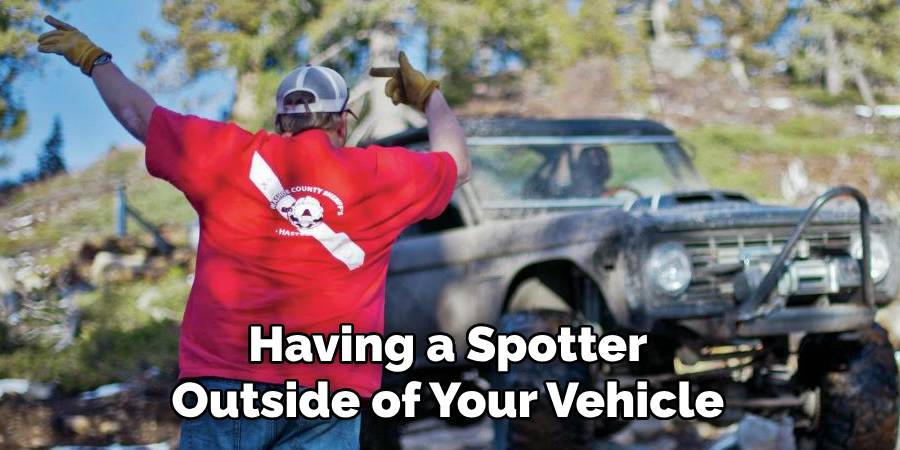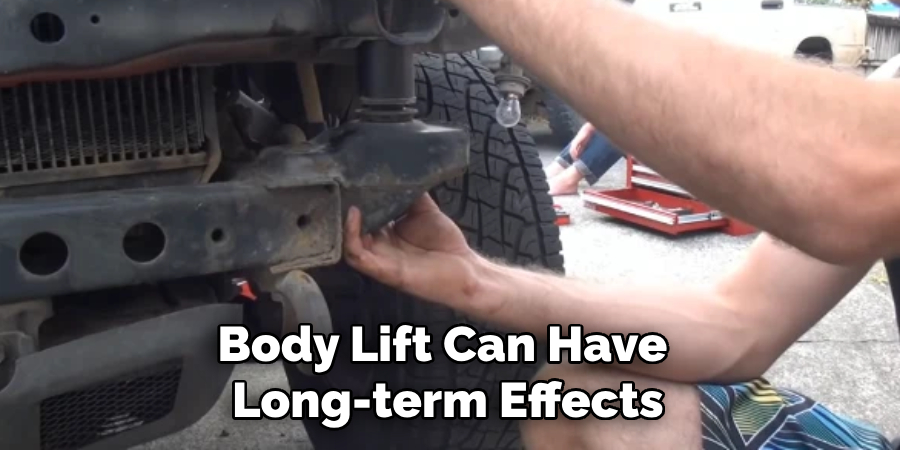Body lifts are a popular modification for off-roading Jeep enthusiasts. These lifts raise the body of the vehicle up off of its frame, providing more clearance and allowing for larger tires. However, while body lifts may seem like an easy and affordable way to improve your Jeep’s performance on rough terrain, they can actually be detrimental to your off-roading experience in the long run.

In this guide, we will discuss why body lifts can be bad for off-roading Jeeps and provide tips on how to reduce body lifts bad for off-roading jeep.
Why is It Important to Reduce Body Lifts Bad for Off-roading Jeep?
1 . To Increase Performance
One of the main reasons why reducing body lifts is important for off-roading Jeeps is that it can significantly improve performance. By lowering the vehicle’s center of gravity, you can increase stability and control while driving on rough terrain. This allows you to tackle more challenging obstacles with ease and makes your Jeep more capable in off-road situations.
2 . To Avoid Damage
Another important reason to avoid excessive body lifts is to prevent damage to your Jeep. When you increase the gap between the frame and body of your Jeep, you are creating more space for rocks, branches, and other debris to get caught. This can lead to costly repairs and put a damper on your off-roading adventures.
3 . To Maintain Safety
Reducing body lifts is also crucial for maintaining safety while off-roading. The higher your vehicle is lifted, the more likely it is to roll over on uneven terrain. By keeping your Jeep closer to the ground, you can reduce the risk of accidents and ensure a safer off-roading experience.
4 . To Avoid Legal Issues
In some states, there are laws and regulations in place regarding the height of lifted vehicles. Excessive body lifts can put you at risk of receiving fines or even having your vehicle impounded. By keeping your Jeep’s lift within legal limits, you can avoid these potential legal issues.
5 . To Preserve the Vehicle’s Integrity

Off-roading Jeeps are designed to handle rough terrain and endure intense driving conditions. However, excessive body lifts can put unnecessary strain on the vehicle’s frame and suspension. By reducing body lifts, you can help preserve the integrity of your Jeep and ensure that it continues to perform well for years to come.
15 Tips on How to Reduce Body Lifts Bad for Off-roading Jeep
1 . Choose Your Jeep Wisely
When it comes to off-roading, the type of Jeep you choose can make a big difference. Make sure you pick a model that has good ground clearance, sturdy construction and powerful suspension. Also, consider the weight of the vehicle and its overall size. Smaller Jeeps tend to be more nimble and easier to handle on rough terrain.
2. Invest in Quality Tires
Off-roading can put your tires through a lot of wear and tear. It’s important to invest in quality tires that are designed for off-road use. Look for tires with a durable tread pattern and deep grooves for better traction. It’s also a good idea to carry a spare tire with you in case of emergencies.
3. Upgrade Your Suspension
Your suspension system plays a crucial role in off-roading. Consider upgrading your shocks, springs and other components for better performance on rough terrain. A lifted suspension can also provide more ground clearance and allow for larger tires.
4. Protect Your Undercarriage

Off-roading can expose your Jeep’s undercarriage to rocks, debris and other hazards. Invest in skid plates and rock sliders to protect vulnerable areas such as the oil pan, gas tank and transfer case. These additions can save you from costly damages and repairs.
5. Add a Winch
A winch can be a lifesaver when you get stuck in mud, sand or other tough terrain. Look for one with a high pulling capacity to handle the weight of your Jeep and consider investing in additional accessories such as snatch blocks for more versatile use.
6. Carry Essential Tools and Equipment
Always carry a well-stocked off-roading toolkit in your Jeep. This should include items such as a tire repair kit, air compressor, tow straps, and a high-lift jack. These tools can help you get out of sticky situations and make repairs if needed.
7. Practice Proper Driving Techniques
Off-roading requires a different set of driving skills compared to regular road driving. Make sure to practice proper techniques such as maintaining momentum, using the right gear ratio and avoiding sudden braking or acceleration.
8. Join a Jeep Club
Joining a local Jeep club is a great way to learn from experienced off-roaders and gain access to new trails. These clubs offer opportunities for group rides, training events and social gatherings with other Jeep enthusiasts.
9. Know Your Limits
It’s important to know your limits and the capabilities of your Jeep. Don’t attempt to tackle difficult trails or obstacles if you don’t feel comfortable or confident in your vehicle’s abilities. Start with easier trails and gradually work your way up as you gain experience.
10. Always Have a Spotter
Having a spotter outside of your vehicle can help guide you through tricky situations and prevent accidents. Choose someone with off-roading experience who can communicate clearly and give you helpful instructions.

11. Use the Right Tools for Recovery
In case of getting stuck or needing to recover another vehicle, make sure you have the proper equipment such as a winch, tow straps, and shackles. It’s also important to know how to use these tools safely and effectively.
12. Take Care of Your Jeep
Off-roading can put a lot of strain on your Jeep, so it’s important to take care of it properly. Regularly check and maintain your vehicle’s fluids, brakes, and other components to prevent breakdowns while out on the trails.
13. Know the Trail Rules and Regulations
Before hitting the trails, make sure you know the rules and regulations of the area you will be off-roading in. This includes obtaining any necessary permits or passes, staying on designated trails, and respecting private property.
14. Stay Safe and Prepared
Off-roading can be a fun and thrilling experience, but it’s important to prioritize safety. Always wear proper safety gear such as helmets and seat belts, and make sure to have a first aid kit and emergency supplies on hand.
15. Respect the Environment
Off-roading can have negative impacts on the environment if not done responsibly. Make sure to follow leave-no-trace principles, avoid damaging vegetation, and properly dispose of any waste or trash. Remember that preserving nature ensures that we can continue to enjoy off-roading for years to come.
Frequently Asked Questions
What Precautions Should I Take to Reduce Body Lifts Bad for Off-roading Jeep?
To reduce the chances of damaging your off-roading Jeep while performing body lifts, there are a few precautions you can take: Make sure to choose a reputable brand and model that is specifically designed for your Jeep’s make and model. Avoid generic or universal kits as they may not fit properly and could potentially cause more harm than good.
Also, be sure to thoroughly read and follow the installation instructions provided with the kit. Additionally, it’s important to have a professional mechanic or experienced off-roading enthusiast assist you with the installation, as they will have the necessary knowledge and expertise to properly align and secure your Jeep’s suspension components after the lift is installed.
Can I Still Use My Factory Tires and Wheels After Installing a Body Lift?
Yes, most body lift kits allow for the use of factory tires and wheels. However, it’s important to note that there may be certain limitations depending on the size of your lift.
Be sure to check with the manufacturer or consult with an off-roading expert to determine if your specific tires and wheels will work with the desired body lift size. In some cases, you may need to make additional modifications or upgrades to your Jeep’s suspension in order to accommodate larger tires and wheels.
Are Body Lifts Reversible?
Yes, most body lifts can be easily reversed if desired. However, it’s important to note that the process of reversing a body lift can be time-consuming and labor-intensive, depending on the size and complexity of the lift.
It’s always recommended to thoroughly research and consider all factors before deciding to install a body lift on your Jeep, as it may not be something you want to reverse in the future.
Are There Any Long-Term Effects of Installing a Body Lift?
Installing a body lift can have long-term effects on your off-roading Jeep. Some potential effects to consider include changes in handling and steering, increased strain on suspension components, and potential alignment issues.

It’s important to regularly inspect and maintain your Jeep after installing a body lift to ensure that all components are functioning properly and to address any potential issues before they become bigger problems.
Conclusion
Now you know how to reduce body lifts bad for off-roading jeep enthusiasts, you can fully enjoy the thrill of off-roading without compromising the performance of your jeep. By following these steps, you can ensure that your jeep is equipped with the necessary upgrades and modifications to conquer any terrain.
You have learned that reducing body lifts is crucial for off-roading jeeps because it helps maintain the stability, balance, and clearance of your vehicle. It also prevents damage to your jeep’s suspension and steering components.

About
JeepFixes Team is a skilled author for Jeep Fixes, bringing 6 years of expertise in crafting a wide range of jeep fixes. With a strong background in jeep fixes work, JeepFixes Team’s knowledge spans various types of fixtures, from decorative pieces to functional hardware, blending precision with creativity. His passion for jeep fixes and design has made him a trusted resource in the industry.
Professional Focus:
Expert in Jeep Fixes : JeepFixes Team aesthetic specializes in creating durable and innovative jeep fixes, offering both appeal and functionality. His work reflects a deep understanding of jeep fixes techniques and materials.
Sustainability Advocate : He is dedicated to using sustainable practices, ensuring that every fixture is crafted with eco-friendly methods while maintaining high-quality standards.
In his writing for jeep fixes, JeepFixes Team provides valuable insights into the latest trends, techniques, and practical advice for those passionate about jeep fixes, whether they are professionals or DIY enthusiasts. His focus on combining artistry with engineering helps others discover the true potential of jeep in design.
